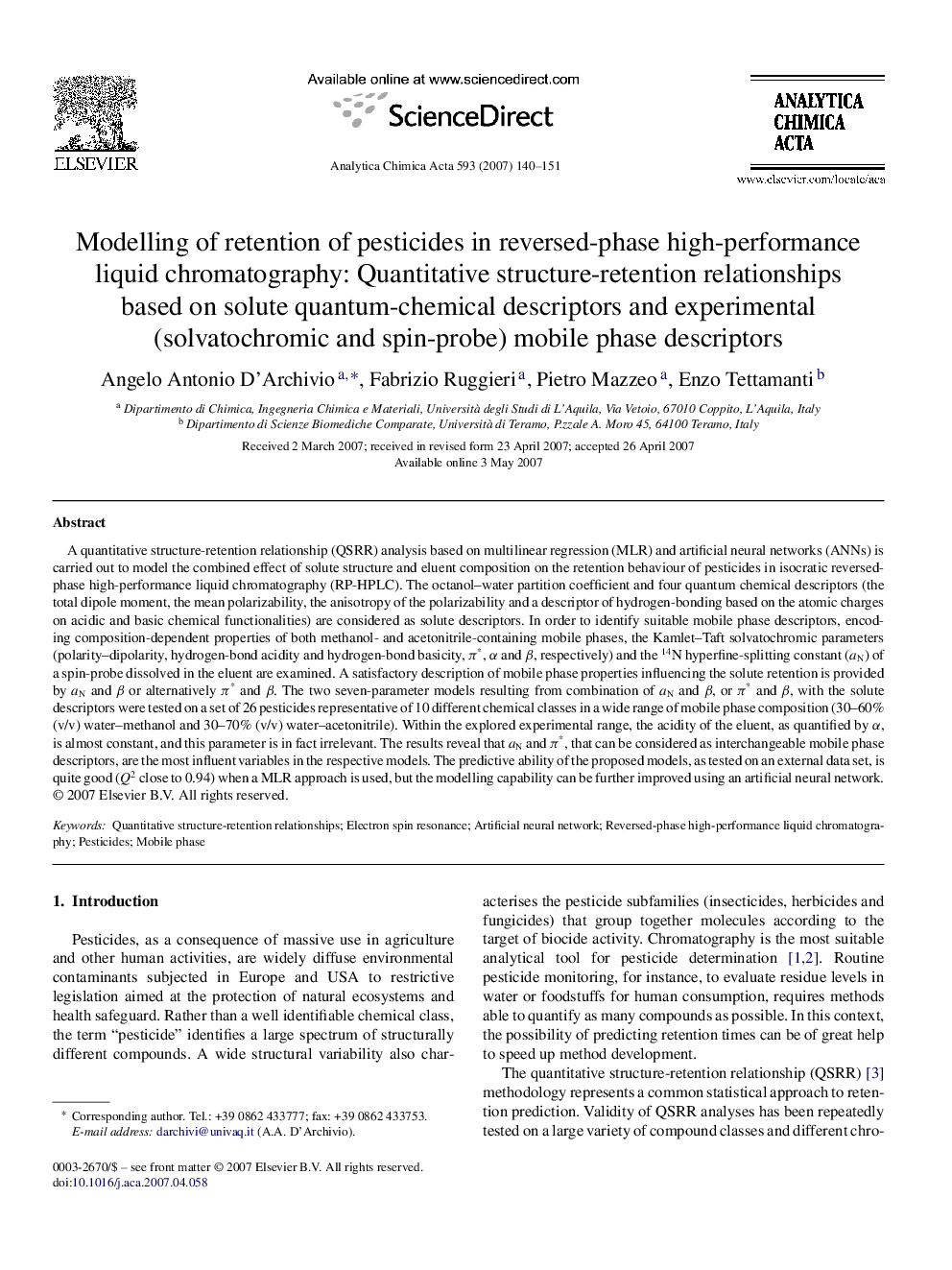| کد مقاله | کد نشریه | سال انتشار | مقاله انگلیسی | نسخه تمام متن |
|---|---|---|---|---|
| 1170196 | 960670 | 2007 | 12 صفحه PDF | دانلود رایگان |

A quantitative structure-retention relationship (QSRR) analysis based on multilinear regression (MLR) and artificial neural networks (ANNs) is carried out to model the combined effect of solute structure and eluent composition on the retention behaviour of pesticides in isocratic reversed-phase high-performance liquid chromatography (RP-HPLC). The octanol–water partition coefficient and four quantum chemical descriptors (the total dipole moment, the mean polarizability, the anisotropy of the polarizability and a descriptor of hydrogen-bonding based on the atomic charges on acidic and basic chemical functionalities) are considered as solute descriptors. In order to identify suitable mobile phase descriptors, encoding composition-dependent properties of both methanol- and acetonitrile-containing mobile phases, the Kamlet–Taft solvatochromic parameters (polarity–dipolarity, hydrogen-bond acidity and hydrogen-bond basicity, π*, α and β, respectively) and the 14N hyperfine-splitting constant (aN) of a spin-probe dissolved in the eluent are examined. A satisfactory description of mobile phase properties influencing the solute retention is provided by aN and β or alternatively π* and β. The two seven-parameter models resulting from combination of aN and β, or π* and β, with the solute descriptors were tested on a set of 26 pesticides representative of 10 different chemical classes in a wide range of mobile phase composition (30–60% (v/v) water–methanol and 30–70% (v/v) water–acetonitrile). Within the explored experimental range, the acidity of the eluent, as quantified by α, is almost constant, and this parameter is in fact irrelevant. The results reveal that aN and π*, that can be considered as interchangeable mobile phase descriptors, are the most influent variables in the respective models. The predictive ability of the proposed models, as tested on an external data set, is quite good (Q2 close to 0.94) when a MLR approach is used, but the modelling capability can be further improved using an artificial neural network.
Journal: Analytica Chimica Acta - Volume 593, Issue 2, 19 June 2007, Pages 140–151